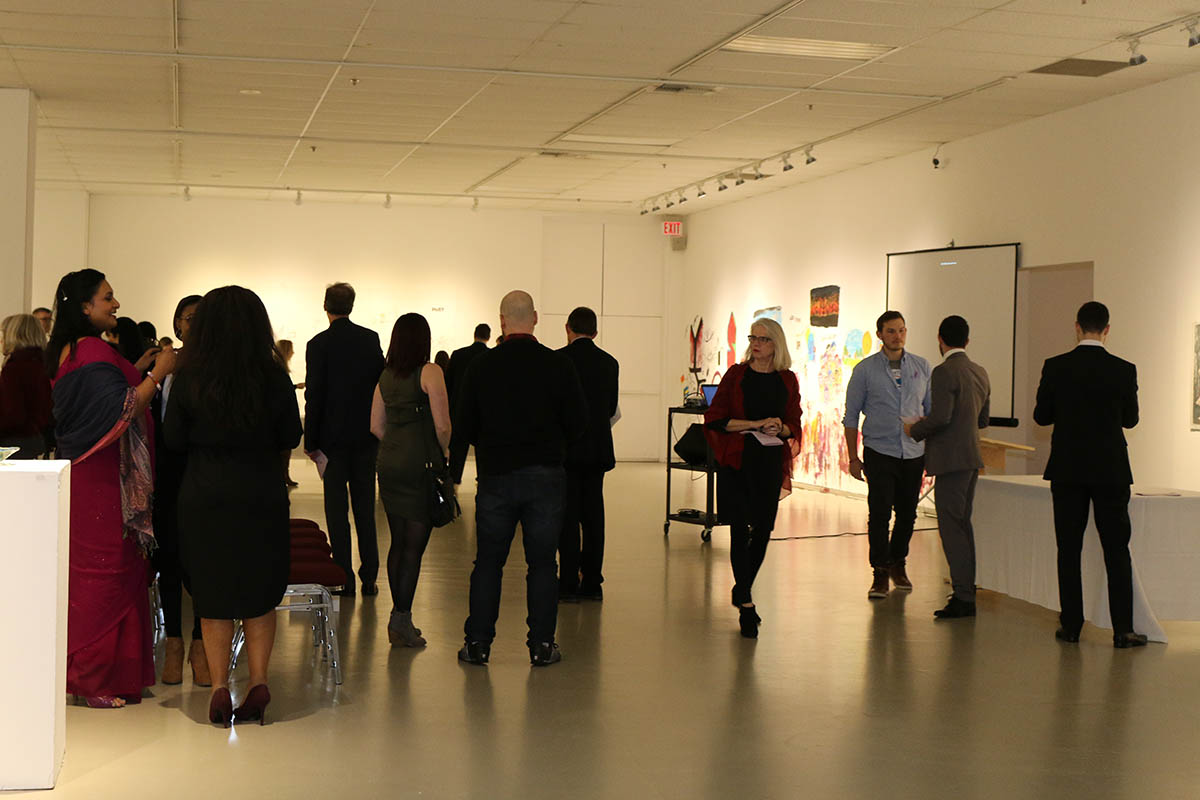Judith Dietz is a curator, historian and Saint Mary’s University alumna, BA'84, MA'07, whose discovery at Saint Mary’s Patrick Power Library made national and international headlines and brought a lost relic from over 450 years ago into the public eye.
The daughter of the late Robert Dietz, the first Director and Curator of Saint Mary’s University Art Gallery, Ms. Dietz was born into the arts. Her passion for art and history brought her to the Nova Scotia Museum of Fine Arts in 1973, the predecessor of the Art Gallery of Nova Scotia.
She would go on to become the Art Gallery of Nova Scotia’s first Registrar in 1984 and the Manager of Collections and Gallery Services in 1994. In this capacity, she was responsible for the Permanent Collection and temporary loans, overseeing the growth of the collection from 300 to 12,000 artworks.In addition to curating numerous exhibitions from historical to contemporary, as well as folk art, she has also written a number of related collection and exhibition articles.Over the course of her time at the gallery, she has mentored numerous art and history students.
Her 1998 exhibition and publication, An Expression of Faith: Sacred Art of Centuries Past, brought focus and attention to a small but significant historical collection of religious art. In 1999 Ms. Dietz was looking through the rare book collection at the Patrick Power Library when she came across a large leather-bound book. Catalogued initially as a “Roman Catholic Antiphonary,” Ms. Dietz quickly realized that there was potentially much more to this illuminated manuscript containing full-page illuminations, numerous portraits of nuns with associated inscriptions, as well as patron’s coats of arms. Subsequent study led to research visits to England, Belgium, the Vatican Secret Archives, and Rome. Ms. Dietz was able to identify the manuscript as the Salzinnes Antiphonal, a hand-scribed illuminated choir book dated 1554 and 1555, commissioned by Dame Julienne de Glymes, Prioress and former Cantrix of the Cistercian Abbey of Salzinnes, near Namur, in present-day Belgium.
Ms. Dietz was invited to present her research at the International Medieval Congress in Leeds, England in 2003 and the International Medieval Studies Congress in Kalamazoo, Michigan, USA in 2009, 2010, and 2013; International Workshop on Cultural Dialogues, Religion and Communication, in Ottawa, 2009; the Care and Conservation of Manuscript Conference in Copenhagen, Denmark in 2011, among others. She would go on to write her thesis on the Salzinnes Antiphonal as a graduate student at Saint Mary’s University. Her research was a key element in the justification for the conservation of the Salzinnes Antiphonal by the Canadian Conservation Institute, Ottawa, in partnership with Library and Archives Canada.
The detailed study of the antiphonal led to several significant national and international partnerships and related multidisciplinary projects that have culminated in a publication and the acclaimed exhibition, Centuries of Silence: The Discovery of the Salzinnes Antiphonal on display at the Art Gallery of Nova Scotia, May 5, 2017 to January 28, 2018. The exhibition is scheduled to travel to Namur, Belgium in 2020.
Ms. Dietz has been a member of numerous advisory committees including the Canadian Heritage Information Network, Canadian Museums Association, and the Museum’s Assistance Program. She received recognition for her contributions from the Canadian Museums Association in 2000 and in 2005 the Honourable Myra A. Freeman, former Lieutenant Governor of Nova Scotia, presented her with a certificate recognizing her years of dedicated service to the Art Gallery of Nova Scotia and to Government House. In 2007, she was awarded a Lifetime Achievement Award from the Atlantic Provinces Art Galleries Association.
In 2005, Ms. Dietz opted to retire to pursue her research interests, but continues her affiliation with the Art Gallery of Nova Scotia as Associate Curator of Historical European Art.
Saint Mary’s University is honored to bestow a Doctor of Letters, Honoris Causa to Judith Dietz.





















